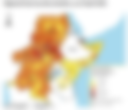
FSNWG Drought Special Report 29 July 2022
Prior to the 2022 March to May (MAM) rainy season, the East Africa region had already been struggling with severe drought conditions, with most areas of the eastern Horn of Africa, particularly northern and eastern Kenya, southern and southeastern Ethiopia, and Somalia, having already faced three consecutive below-average rainy seasons.
The Food Security and Nutrition Working Group (FSNWG) has been closely monitoring the progression of the drought, as well as the region’s overall food security and nutrition situation, and has been providing regular updates through its monthly statements, as well as a series of special alerts published in October 2020, May 2021, October 2021, November 2021, February 2022, and April 2022 calling for immediate action. This report is intended to serve as an update to these previous alerts, covering seasonal progress and providing a projection on the likely food security and nutrition situation through February 2023.
Key messages
- The 2022 March to June Gu/long rains season was extremely poor, with rainfall amounts across much of the region being amongst the lowest in the past 70 years. This has resulted in a fourth consecutive below-average rainy season, an occurrence not seen in at least the last 40 years.
- Crop and livestock production have been severely impacted. In cropping areas, harvests are expected to be well below average. In pastoral areas, poor conditions have driven reduced milk production and the death of over 9.2 million livestock. Food prices continued to soar in the second quarter of the year which, along with below-average household incomes, is limiting food access.
- Hundreds of thousands of people have been forced to leave their homes in search of life-saving assistance. Resource-based conflicts, and risks for gender-based violence (GBV) and sexual exploitation and abuse (SEA), have also increased.
- 16.2 million people face daily household water insecurity, and WASH partners are responding to cholera outbreaks across Ethiopia, Kenya, and Somalia. Unfortunately, however, access to, availability and quality of health services have been negatively affected by the drought.
- Though updates are ongoing, estimates indicate that about 18.6 – 21.1 million people face high levels of acute food insecurity due to the drought in the three countries. This includes 3.2 million people in Emergency (IPC Phase 4) in Kenya and Somalia and 213,180 people in Catastrophe (IPC Phase 5) in Somalia. Parts of southern and central Somalia face a Risk of Famine through September.
- About 568,000 children were admitted for Severe Acute Malnutrition treatment in Ethiopia, Kenya, and Somalia from January to June, up significantly from recent years. About 6.5 million children are projected to suffer from acute malnutrition, of which close to 1.8 million face severe wasting.
- 23 - 26 million people are projected to face high levels of acute food insecurity by February 2023 in Ethiopia, Kenya and Somalia, due primarily to the drought, if the October to December rains fail. However, within already food insecure populations, the severity of their food insecurity is expected to increase. Therefore, in the absence of a scale up of humanitarian assistance, significant increases in the number of people in Emergency (IPC Phase 4) and Catastrophe (IPC Phase 5) are expected.
- To enable humanitarian partners to ramp-up their response to the drought, US$1.8 billion is required over the next months. However, at this time, the drought response remains severely underfunded. To respond to the rapidly escalating humanitarian needs across the region, funding for the multi-sectoral drought response needs to be scaled up immediately across the region in order to save lives.
Download the latest FSNWG Drought Alert for the updated analysis.



